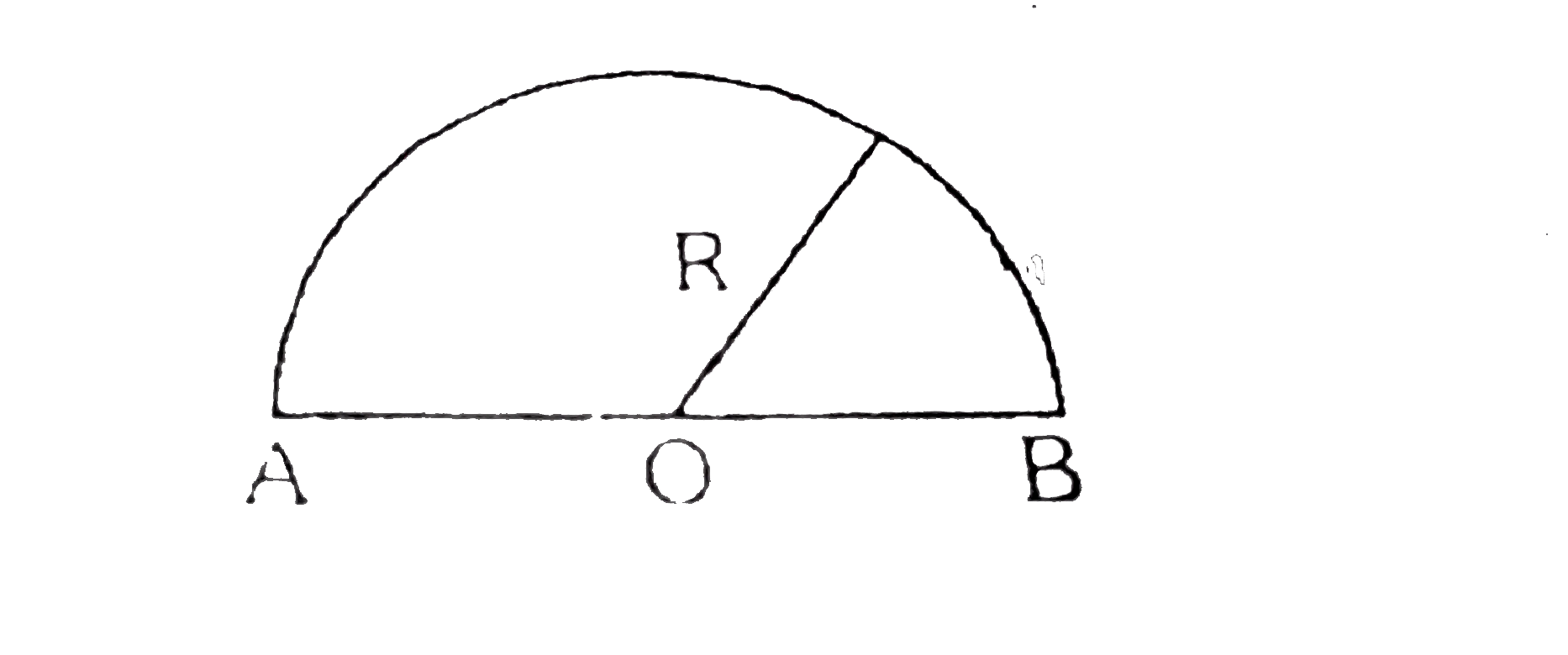Distance is a scalar quantity. Displacement is a vector quqntity. The magnitude of displacement is always less than or equal to distance. For a moving body displacement can be zero but distance cannot be zero. Same concept is applicable regarding velocity and speed. Acceleration is the rate of change of velocity. If acceleration is constant, then equations of kinematics are applicable for one dimensional motion under the gravity in which air resistance is considered, then the value of acceleration depends on the density of medium. Each motion is measured with respect of frame of reference. Relative velocity may be greater/ smaller to the individual velocities.
A particle moves from A to B. Then the ratio of distance to displacement is :-
 Solution in Gujrati
Solution in Gujrati
π2
2π
π4
1:1
The correct Answer is:A
DistanceDispacement=πd/2d=π2
Topper's Solved these Questions
- KINEMATICSBOOK - ALLEN CHAPTER - KINEMATICSEXERCISE - Comprehension#2
5 Videos
- KINEMATICSBOOK - ALLEN CHAPTER - KINEMATICSEXERCISE - Comprehension#3
5 Videos
- KINEMATICSBOOK - ALLEN CHAPTER - KINEMATICSEXERCISE - Assertion-Reason
20 Videos
- ERROR AND MEASUREMENTBOOK - ALLEN CHAPTER - ERROR AND MEASUREMENTEXERCISE - Part-2(Exercise-2)(B)
22 Videos
- KINEMATICS (MOTION ALONG A STRAIGHT LINE AND MOTION IN A PLANE)BOOK - ALLEN CHAPTER - KINEMATICS (MOTION ALONG A STRAIGHT LINE AND MOTION IN A PLANE)EXERCISE - BEGINNER S BOX-7
8 Videos
Similar Questions
A car is moving on a straight road. The velocity of the car varies with time as shown in the figure. Initially (at t=0), the car was at x=0, where, x is the position of the car at any time 't'.

The variation of acceleration (a) with time (t) will be best represented by :-
View SolutionThe trajectory of a projectile in a vertical plane is y=√3x−2x2. [g=10m/s2]

Angle of projection θ is :-
View SolutionAssertion: A projectile is thrown with an initial velocity of (aˆi+bˆj)m/sec. If range of projectile is maximum then a=b.
Reason: In projectile motion, angle of projection is equal to 45∘ for maximum rang econdition.
View SolutionA cube has a side of length 1.2×10−2m. Calculate its volume.
View SolutionA football player kicks a ball at an angle of 30∘ with an initial speed of 20 m/s. Assuming that the ball travels in a vertical plane, calculate (a) the time at which the ball reaches the highest point (b) the maximum height reached (c) the horizontal range of the ball (d) the time for which the ball is in the air, (g=10m/s2)
View SolutionDistance is a scalar quantity. Displacement is a vector quqntity. The magnitude of displacement is always less than or equal to distance. For a moving body displacement can be zero but distance cannot be zero. Same concept is applicable regarding velocity and speed. Acceleration is the rate of change of velocity. If acceleration is constant, then equations of kinematics are applicable for one dimensional motion under the gravity in which air resistance is considered, then the value of acceleration depends on the density of medium. Each motion is measured with respect of frame of reference. Relative velocity may be greater/ smaller to the individual velocities.
A person is going 40 m north, 30m east and then 30√2m southwest. The net displacement will be
View SolutionAssertion : If the displacement of the body is zero, the distance covered by it may not be zero.
Reason : Displacement is a vector quantity and distance is a scalar quantity.
View SolutionDefine distance, displacement, speed, velocity and acceleration.
View Solutionदूरी, विस्थापन, चाल तथा वेग में कौन सी राशि अदिश है तथा कौन सी राशि सदिश है?
View SolutionINTRODUCTION TO KINEMATICS| SPEED|DISTANCE| DISPLACEMENT| VELOCITY|ACCELERATION
View SolutionIntroduction of distance | displacement velocity | acceleration
View SolutionIntroduction Of Distance, Displacement Velocity,Acceleration
View SolutionAssertion: Average speed in an interval cannot be less than the magnitude of average velocity in the same interval Reason: For a particle in motion distance travelled is always greater than or equal to the magnitude of the displacement.
View Solutionनिम्न भौतिक राशियों को अदिश व सदिश राशियों में वर्गीकृत कीजिए|
चाल, आयतन, दूरी, वेग, द्रव्यमान, भार, त्वरण, विस्थापन
View SolutionIntroduction to Motion in One Dimension| Distance#!#Displacement#!#Speed#!#Velocity#!#Acceleration
View SolutionPosition || Displacement || Distance || Velocity || Average Velocity || Acceleration
View Solution
